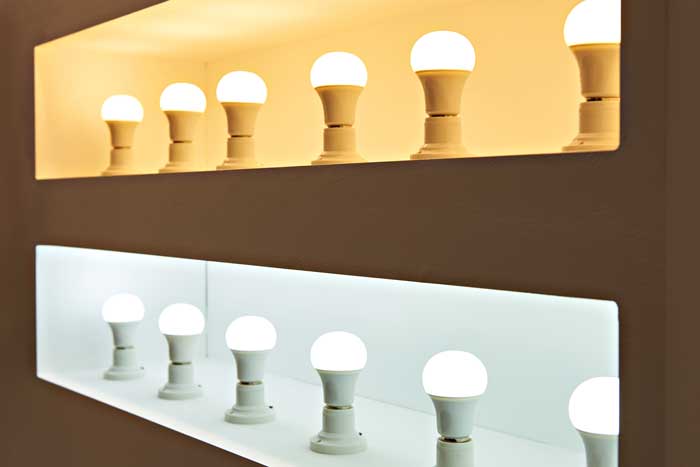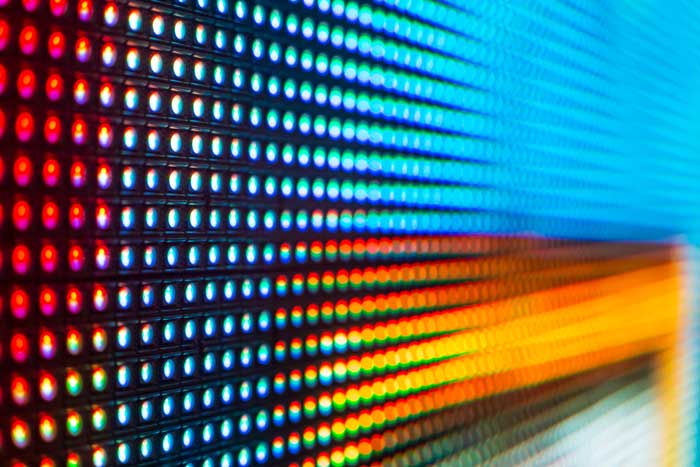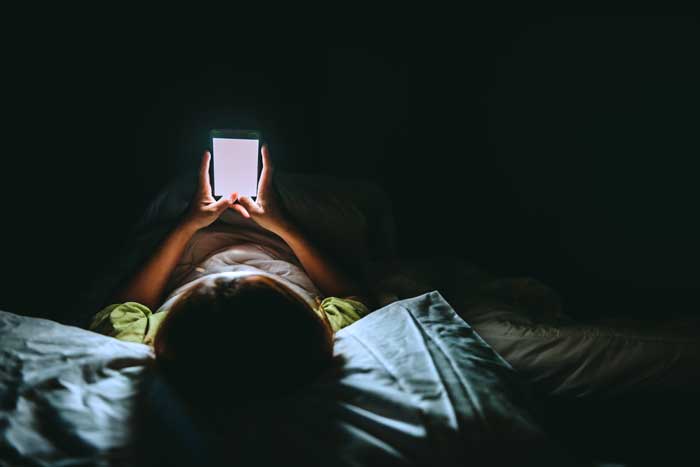
Circadian lighting is a term that has gained popularity in recent years – you may have also heard it referred to as ‘human-centric lighting’ or ‘tunable lighting’ or mentioned in the context of biophilia. While these are more often used as buzzwords, circadian lighting is an area of real research, science, and innovation.
The term “circadian rhythm” refers to functions within the body that occur approximately every 24-hours. The word ‘circadian’ comes from Latin with ‘circa’ meaning ‘around’ and ‘diēm’ meaning ‘day’. While circadian lighting is a relatively new term, circadian rhythms have been observed for centuries in both plants and animals.
Circadian lighting refers to lighting that is designed to have a biological impact on the human circadian system. Circadian lighting sends signals to the master clock in the brain, telling our bodies when it is daytime and when it is night and what functions to perform at various times of the day. A healthy circadian rhythm is associated with improved long-term health and helps promote better sleep at night, allowing our brains to repair our bodies as well as our minds.
The goal of circadian lighting is to provide sufficient light signals to the brain to help reinforce the natural light/dark signals we would receive from the sun if we spent more of our time outdoors. A simple mantra to help capture the goal of circadian lighting is, “brighter days and darker nights”. Circadian lighting should provide a strong daytime light signal, telling our brain that it is daytime and to perform all the functions it needs to during the day. At night, we want to reduce that daytime light signal to help our bodies wind down, telling our brain to perform nighttime functions.
This article will discuss the relationship between light and circadian rhythms, review misconceptions about color tuning, and compare color tuning or tunable white to effective circadian lighting LED technology.
Color Tuning and Circadian Lighting

Color tuning or tunable lighting is not necessarily circadian lighting. Color tuning or tunable white lighting refers to a specific kind of LED technology where the hue of white light can be changed to appear warmer (more yellow) or cooler (bluer) over a period of time. Color tuning technology is often advertised as a way of simulating the color of daylight from sunrise through the day to sunset.
Color tuning allows users to control the color (or hue) of their white light – from warm white (more yellow), neutral white, all the way to cool white (bluer) – and for each different hue, users can also adjust the light intensity. These dynamic lighting systems offer environmental ambiance and may have other psychological benefits, but they fail to target how our bodies respond to light biologically.
The reason color tuning fails to meet our biological needs is that virtually all color tuning systems use white LEDs that were designed specifically for vision only. This means that while color tuning allows users to adjust light intensity and hue, the LEDs were not designed to target the circadian system. Because traditional white LEDs were designed for vision and energy efficiency, they do not deliver the key sky-blue wavelengths of light our brains need to effectively stimulate the circadian system.
True and effective circadian lighting includes a specific part of the light spectrum (490nm), that helps regulate our circadian rhythms – this sky-blue signal is not found in traditional LEDs. This important part of the light spectrum sends the strongest circadian signal to our brains which ultimately provide benefits that could help reduce chronic health conditions related to our perpetual “indoor lifestyle” by improving mood, sleep, and overall sense of well-being.
Light and Circadian Rhythms

We have discussed what circadian lighting is and how it is different from color tuning. Now, let’s dive deeper into how light impacts our circadian rhythms.
Humans are light-seeking creatures. We have evolved to rely on sunlight as the primary signal that helps regulate the master-clock in our brains. This master-clock controls all kinds of biological functions – from gene expression to daily hormone production in our bodies.
In order for our bodies to receive a meaningful circadian light signal, light must enter the eye so it can be transmitted to the master clock in the brain. Every day our bodies prioritize certain biological functions at different times of day — Did you know that every cell in our body has its own clock?! That means every cell in your body relies on the master-clock to help regulate when they are active and when they should rest.
Ideally, we would spend our days in the sunshine and our nights under the stars. When we receive good daytime light signals the master-clock in our brain is able to tell our bodies to perform all kinds of functions – regulate body temperature, blood pressure, regulate our metabolism, help us to feel alert, and much more. In the evening, after sunset, our bodies should also receive proper darkness signals or lower light signals. This tells the master-clock that the day has ended and to begin nighttime functions – melatonin production, changes to body temperature, metabolism, cortisol levels, and much more.
For many people, their only exposure to light during the day is from artificial lighting in our workplace, classrooms, or home. These lighting conditions may be sufficient to allow us to see and perform tasks, but research has shown that they are woefully insufficient at providing the daytime circadian light signals our bodies need. Sustained exposure to this type of low-quality light can have long-term adverse effects like low mood, fatigue, lack of concentration, and poor sleep.
Additionally, rather than winding down under the stars, we remain very active in the night and often spend evenings hours under the same lighting conditions we had during the day.
Ironically, the artificial light that was too dim for daytime circadian stimulation is now too bright to allow our bodies to wind down. We find ourselves living in this perpetual state of circadian limbo – where our days are too dim to clearly signal the master-clock for the daytime tasks and our nights are too bright to signal the master-clock to begin nighttime tasks.
The Problem: Chronic Indoor Lifestyle
People spend more time indoors than ever before — in fact, a 2001 study by UC Berkley and the EPA reported that we spend 87% of our time indoors [7]. If we think back in human history, we evolved into our natural surroundings – waking with the sun and going to sleep soon after sunset. Fast forward to today — we no longer maintain this critical connection to the sun or daylight and are spending the vast majority of our time under artificial lighting.
From a lighting perspective, we know our biology relies heavily on our relationship with the sun to repair our bodies and our minds. In fact, daylight is the strongest signal our bodies can receive to help regulate our circadian rhythms and send signals to our brain telling our bodies when to perform different functions.
Spending most of our time indoors means that we no longer receive this critical light signal and research shows that traditional indoor lighting does not provide the light signals our bodies need for healthy circadian rhythms.
Does Circadian Lighting Work?
Yes! There is a special photopigment in the eye – melanopsin – which communicates directly with the master clock in the brain. Melanopsin is most sensitive to 490nm – which translates to the “sky-blue” region of the visible spectrum – and transmits non-visual information to the master clock in our brains. Traditional white LEDs usually have a blue peak around 450nm which means they are not as effective at targeting melanopsin or providing a circadian signal to the brain [9]. This means that any indoor space with traditional white light — tunable or not — does not provide the important sky-blue signal our bodies need.
Circadian Lighting and Productivity
Lighting to optimize circadian health continues to gain popularity and many businesses are interested in circadian lighting as a means of and understanding whether happier, more energized workers result in increased productivity. From a business standpoint, the benefits of circadian lighting go beyond wellness and offer a new way to increase employee retention rates and harness a more productive and motivated workforce.
Some studies suggest circadian lighting can promote productivity in the workplace, citing an increase in people’s energy and vitality – particularly at the start and middle of the day [5]. Research continues to look at methods for bringing key aspects of daylight indoors and how that might have a beneficial effect on memory recall and other tasks.
Circadian Lighting and Wellness
Wellness is becoming more of a central theme in the design and a critical part of each of our daily routines. We know that subtle changes in lifestyle can allow us to feel better, which has a significant ripple effect on our overall feelings of well-being. Circadian lighting is one way we can design better spaces to create subtle, yet meaningful change in our lifestyle. With true circadian lighting, our bodies are getting better daytime light signals which can help improve sleep, mood, and our overall sense of well-being.
Circadian lighting sends signals to our internal master clock which regulates all kinds of hormone production, telling our bodies when and what to do during the day and even at night while we sleep. Sending strong light signals to the master clock promotes better sleep, reduced fatigue, and increased concentration which all contribute to how motivated we feel.[6]
Color Tuning vs Spectrally Optimized LEDs
Currently, there are two (2) approaches that lighting manufacturers advertise to achieve ‘human-centric’ or circadian lighting – tunable white, AKA color tuning or dynamic white LED systems or spectrally optimized LED solutions.
Color tuning involves controlling the intensity and color of white light and adjusting both over the course of the day. Color tuning allows users to control the color (or hue) of their white light – from warm white (more yellow), neutral white, all the way to cool white (more blue) – and for each different hue, users can also adjust the light intensity. These dynamic lighting systems offer environmental ambiance and may have other psychological benefits, but they fail to target how our bodies respond to light biologically.
Color tuning is often marketed as a way to ‘mimic the daylight spectrum from day to night’, however, a study from 2001 collected over 2000 data points and showed that daylight color temperature does not change much beyond 5500K to 6500K over the course of a day [8]. So, this perceived change from very warm to very cool light that is commonly talked about and used as a marketing feature, is actually not an accurate reflection of what is happening in the sky throughout the day.
Spectrally optimized LEDs, on the other hand, take a very different approach. They target melanopsin, which is a photopigment in the eye that sends signals to our brain to help regulate our internal clock and a variety of biological functions every day. Spectrally optimized LEDs are designed specifically with the circadian system in mind and can create a white light providing high daytime circadian stimulus without changing the color of the light throughout the day.
BIOS Origins – NASA and Circadian Lighting
In the early 1990s, NASA scientists began experimenting with HPS lighting to produce leafy greens, such as lettuce, in space. The success of this experiment demonstrated how artificial light might be beneficial across other applications, including human wellness.
Orbiting the earth aboard the International Space Station (ISS), astronauts experience a sunrise and sunset every 90 minutes — that’s approximately 16 sunrises and sunsets every 24 hours! With such a frequent change in light exposure, the astronauts do not receive a sufficient light signal to regulate their circadian rhythms. Lack of a proper daylight signal directly also affects the astronauts’ ability to sleep and stay awake. In this extreme environment, it became clear, very quickly, that the astronauts needed a way to properly regulate their circadian rhythms for their safety and well-being.
The success of applied lighting technologies for plant growth in the early 1990s led to former BIOS VP of Lighting Research and Agriculture, Neil Yorio, to eventually explore the other benefits of LED light technology in space — this was how BIOS Lighting began.
Combining the expertise of two former NASA contractors – Neil Yorio and Robert Soler (BIOS VP Biological Research and Technology) who met at the NASA Space Life Sciences Lab – BIOS has continued to evolve its biological lighting technologies. As a biology-first company, BIOS continues to push the envelope in LED lighting solutions for both plants and humans.
Where to Find How Do I Get Circadian Lighting?
True circadian lighting has considerable health, well-being, and productivity benefits. BIOS SkyBlue® circadian LED solutions were designed with a biology-first approach to circadian lighting. BIOS SkyBlue® is the most effective circadian LED technology in standard color temperatures (3000K, 3500K, and 4000K) while offering brilliant light quality (CRI >80 and R9>90). BIOS understands the fundamental science behind circadian lighting and continues to innovate, finding new ways to improve the quality of the spaces we occupy every day on a biological level.
BIOS brings unique expertise in the understanding and application of the fundamental science behind human and plant biology. BIOS continues to research and innovate based on this unique expertise, studying human health and how our environment influences our sense of well-being.
- Boubekri, M., Cheung, I. N., Reid, K. J., Wang, C. H., & Zee, P. C. (2014). Impact of windows and daylight exposure on overall health and sleep quality of office workers: a case-control pilot study. Journal of clinical sleep medicine: JCSM: official publication of the American Academy of Sleep Medicine, 10(6), 603–611. <https://doi.org/10.5664/jcsm.3780>
- Wahl, S., Engelhardt, M., Schaupp, P., Lappe, C., & Ivanov, I. V. (2019). The inner clock-Blue light sets the human rhythm. Journal of biophotonics, 12(12), e201900102. <https://doi.org/10.1002/jbio.201900102>
- Gianluca Tosini, Ian Ferguson, Kazuo Tsubota (2016). Molecular Vision: Effects Of Blue Light On The Circadian System And Eye Physiology. <http://www.molvis.org/molvis/v22/61/>
- Hornick, T. R., Higgins, P. A., Duffy, M. E., Beers, W. W., & Figueiro, M. G. (2015). Using Light to Manage Sleep-Wake Issues in Patients With Dementia. Federal practitioner: for the health care professionals of the VA, DoD, and PHS, 32(2), 42–45. <https://www.ncbi.nlm.nih.gov/pmc/articles/PMC6363327/>
- Figueiro PhD, M., Steverson, B., Heerwagen PhD, J. and Rea PhD, M., (2017). Circadian Light And Its Impact On Alertness In Office Workers: A Field Study. [online] Lrc.rpi.edu <https://www.lrc.rpi.edu/programs/lightHealth/pdf/Figueiro_IESConference_Aug2017.pdf>
- Court, MBA., A., Pearson, Prof., A. and Frewin, Prof., D., (2010). The Effects Of Exposure To Natural Light In The Workplace On The Health And Productivity Of Office Workers: A Systematic Review Protocol. [online] Walters Kluwer. <https://journals.lww.com/jbisrir/fulltext/2010/08161/the_effects_of_exposure_to_natural_light_in_the.5.aspx(>
- Klepeis NE, Nelson WC, Ott WR, et al. The National Human Activity Pattern Survey (NHAPS): a resource for assessing exposure to environmental pollutants. J Expo Anal Environ Epidemiol 2001;11:231-52. < https://pubmed.ncbi.nlm.nih.gov/11477521/>
- Hernández-Andrés J, Romero J, Nieves JL, Lee RL Jr. Color and spectral analysis of daylight in southern Europe. J Opt Soc Am A Opt Image Sci Vis. 2001;18(6):1325‐1335. doi:10.1364/josaa.18.001325 <https://pubmed.ncbi.nlm.nih.gov/11393625/>\
- Lucas, R. J., Peirson, S. N., Berson, D. M., Brown, T. M., Cooper, H. M., Czeisler, C. A., … Brainard, G. C. (2014). Measuring and using light in the melanopsin age. Trends in Neurosciences, 37(1), 1–9. doi: 10.1016/j.tins.2013.10.004.<http://doi.org/10.1016/j.tins.2013.10.004>




